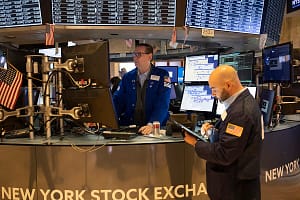The United States economy showed signs of cooling in July 2024, surprising analysts and experts with much lower-than-expected job growth.
On August 2, 2024, according to the Department of Labour data, nonfarm payrolls increased by only 114.000 jobs, marking the lowest figure since January 2021.
This represents a notable decrease compared to the revised 179.000 jobs in June, which is well below the initial forecast of 177.000.
Additionally, the figures for May and June were revised downward, resulting in 29.000 fewer jobs than previously reported. While sectors such as healthcare, construction, and transportation continued to show job growth, the information sector suffered significant losses, reflecting a worrying trend in some regions of the economy.
The unemployment rate also increased to 4.3% from the 4.1% recorded in June. This rise represents a steady increase for three consecutive months, which could indicate a shift in labour market trends. Moreover, the average monthly wage growth was only 0.2%, below the 0.3% expected by analysts. This led to an annual increase of 3.6% in average hourly earnings, insufficient to combat current inflationary pressures.
These data suggest that the U.S. labour market is experiencing an adjustment, with slower growth that could have significant implications for the overall economy.
Although Hurricane Beryl did not directly impact national economic data, a decrease in job vacancies and an increase in unemployment benefit claims, which reached their highest level in 11 months, were observed. This phenomenon has raised concerns in the economic sector, reflecting a potential underlying weakness in the labour market. The Federal Reserve, aware of these changes, decided to maintain its benchmark interest rate of 5.25% to 5.50%. However, it showed a willingness to adjust borrowing costs in response to the labour situation, acknowledging that labour risks are now considered as significant as inflationary risks.
Cooling the labour market could lead the Federal Reserve to consider cutting interest rates at its September meeting, with speculation about a significant cut of up to 50 basis points. Some analysts even suggest that there might be an adjustment within the same meeting, depending on how economic indicators evolve in the coming weeks. This perspective has sparked intense debate among economists and experts about the possible directions of monetary policy, with some arguing that a rate cut might be necessary to stimulate economic growth while others warn about the risks of premature stimulus.
In conclusion, the U.S. economy is at a crucial moment where the cooling labour market and rising unemployment generate significant concerns. The Federal Reserve faces the challenge of balancing inflationary risks with the need to support economic growth. The upcoming policy decisions will be critical in determining the direction of the U.S. economy in the coming months. With the possibility of an interest rate adjustment, the next few months will be vital in assessing how the economy will respond to these challenges and what measures will be implemented to ensure stability and sustainable growth.





Leave a Comment